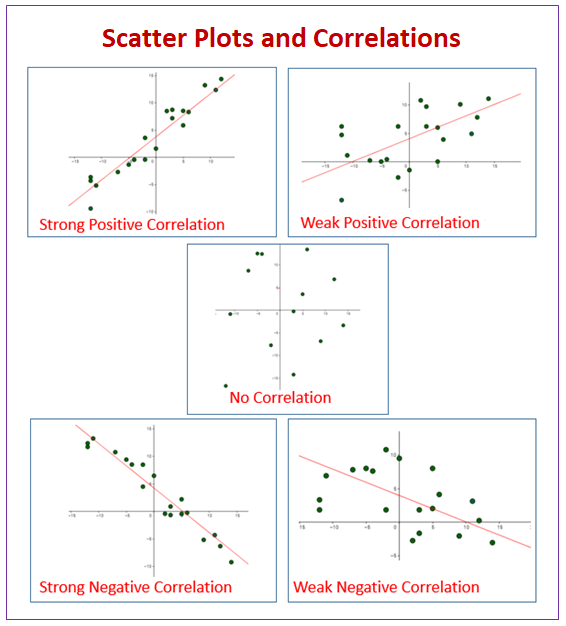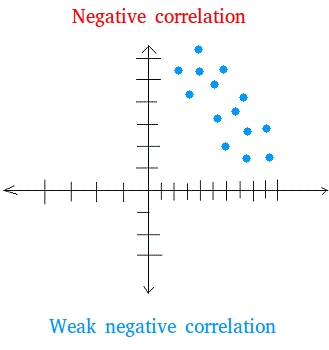

If you want to share your experiences regarding how to draw a Scatter Diagram, you can use the comments section. The fishbone diagram enables to define the root cause of a problem where the scatter plot helps to look for a relationship between variables. Some PMP aspirants confuse the fishbone (Ishikawa ) diagram with the scatter plot. In some cases, both of the two variables may be affected by a third variable. If the data don’t cover a wide enough range, the relationship between the variables is not apparent. of the scatterplot: There is a weak negative association between the amount of rain and. Scatter diagrams are used to understand the relationships between variables. A scatter plot can suggest various kinds of correlations between. If the variables are closer to each other, this means that there is a strong (high degree of) correlation between the variables. It can also be called “Scatter Diagram with Low Degree of Correlation”. If the variables are a bit closer to each other, this means that there is a weak correlation between them. Positive Correlation Strong and Weak Correlation The below chart illustrates the same data as a Scatter Plot. The below table shows the working hours and accidents within a project. “Working hours” is the independent data and the number of accidents depends on the working hours. He notices that as the working hours increases, the number of accidents also increase. The scatter graph of all the data in the research helps the HSE manager to understand the relationship between the two variables. The HSE manager plots the data in a scatter plot by assigning the “working hours” to the horizontal axis (X-axis) and the “number of accidents” to the vertical axis (Y-axis). Let’s review the following scatter diagram example to understand the topic better.Īn HSE manager collects data for the two variables below in order to understand the relationship between the number of accidents and long working hours within a construction project. In other words, you use the scatter plots to demonstrate how two variables are correlated. For example, a student in Year 11 has a height of 148 cm, we can estimate the arm length of this student is around 84 cm.They are used to determine the relationship between two variables. This chart is very useful when one variable is easy to measure and the other is not. The chart above shows there is a positive correlation between arm length and height.Īfter determining the correlation between the variables, you can then predict the behavior of the dependent variable based on the measure of the independent variable. If we see the correlation between the student’s height and arm length exhibit a trend, we can estimate the arm length of a student with a certain value of height given and vice-versa. The scatter graph shows information about the height and the arm length of each of 8 students in Year 11. There is no demonstrated connection between the two variables.Įdit this Diagram Scatter Chart Example: Arm Length on Grade 11 The value of Y seems to be related to the value of X, but the relationship is not easily determined. The value of Y decreases slightly as the value of X increases. The value of Y increases slightly as the value of X increases. The value of Y decreases as the value of X increases. The value of Y increases as the value of X increases. The following types of scatter diagrams show in the table tell about the degree of correlation between variable X and variable Y. The degree of correlation is denoted by “r”. The more the points plotted are closer to the line, the higher is the degree of correlation. The more the points plotted are scattered over the chart, the lesser is the degree of correlation between the variables. The degree to which the variables are related to each other depends on how the points are scattered over the chart. This shows that there is a relationship between the speed of vehicles and accidents happening on the highway. Once the diagram is completed, you notice that as the speed of vehicle increases, the number of accidents also goes up. You select the two variables: motorcycle speed and number of accidents, and draw the diagram. Thus, we can use a scatter diagram to examine theories about cause-and-effect relationships and to search for root causes of an identified problem.įor example, we can analyze the pattern of motorcycle accidents on a highway.

While the diagram shows relationships, it does not by itself prove that one variable causes the other. Most often a scatter diagram is used to prove or disprove cause-and-effect relationships. The pattern of their intersecting points can graphically show relationship patterns. One variable is plotted on the horizontal axis and the other is plotted on the vertical axis. View and play PowerPoint presentations online.Ī scatter diagram (Also known as scatter plot, scatter graph, and correlation chart) is a tool for analyzing relationships between two variables for determining how closely the two variables are related.


 0 kommentar(er)
0 kommentar(er)
